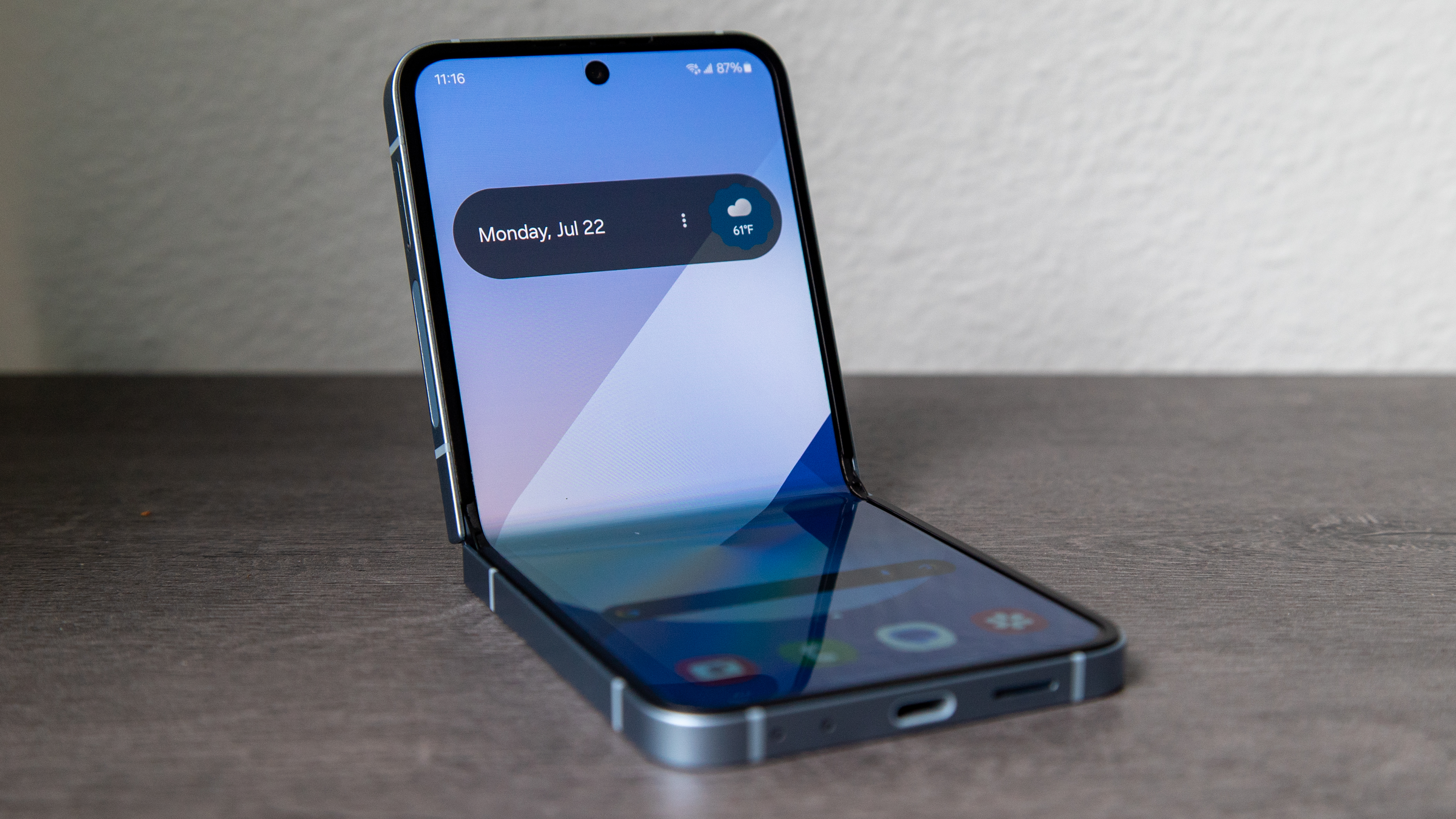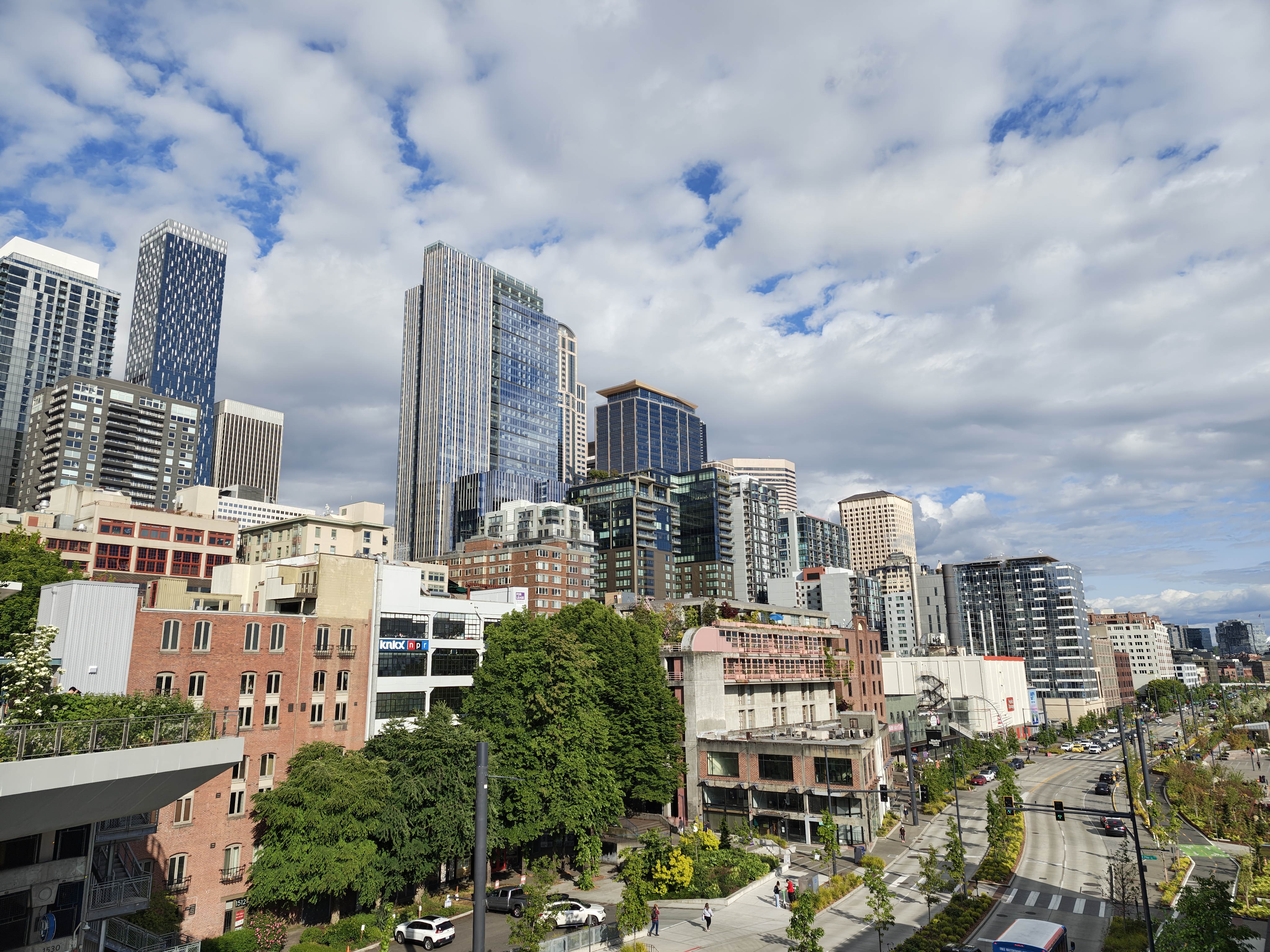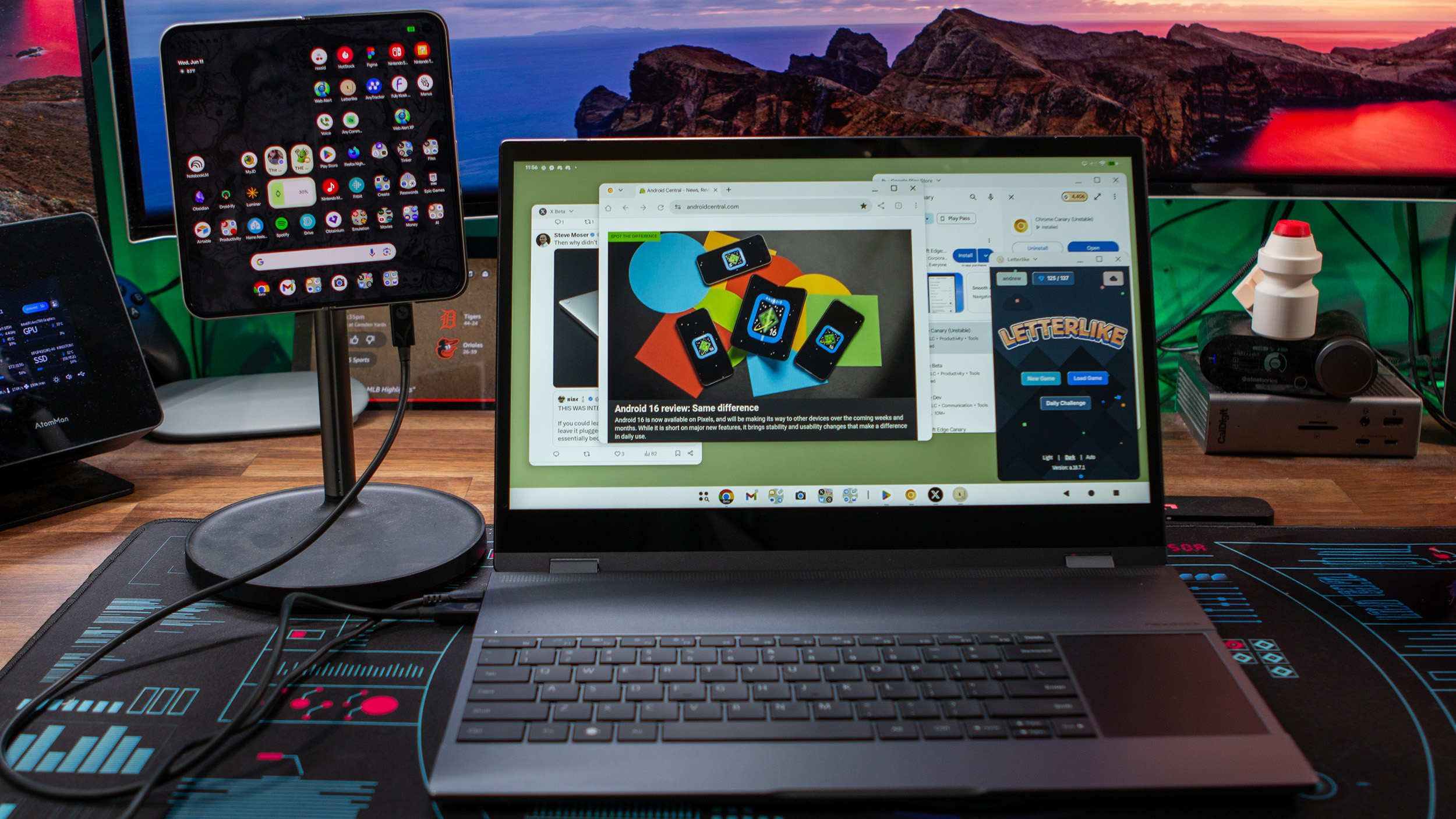Samsung Galaxy Z Flip 6 one year later: Tiptoeing in the right direction

Editor’s Desk
The Galaxy Z Flip 7 launch is right around the corner, and we’re expecting some pretty notable changes and upgrades to Samsung’s next flip phone. With rumored features like a larger cover screen, a thinner chassis, a larger battery, and a more powerful chipset, the Z Flip 7 could be a significant upgrade over the Galaxy Z Flip 6.
Still, with the new model on the horizon, I thought I’d take a look at the Galaxy Z Flip 6 to see how it has held up over the past year. While I’ve been predominantly fixated on last year’s Razr Plus 2024 and this year’s Razr Ultra, the Galaxy Z Flip 6 remains one of my favorite flip phones from Samsung, thanks to its solid hardware and reliable software experience.
Here are my biggest takeaways using the Galaxy Z Flip 6 over the past year and how I hope the Galaxy Z Flip 7 will improve on an already impressive phone.
One UI 7 transforms this phone

“… Drawing Assist… is a lot of fun to use and will not only add some fairly realistic and amusing images to your photos via Sketch to Image but will also turn your doodles into entertaining ‘works of art’ that only a mother could love.”
Derrek Lee, ‘Samsung Galaxy Z Flip 6 review’
When the Galaxy Z Flip 6 launched, it was running One UI 6 based on Android 14, which was a pretty solid upgrade that brought changes to the Quick Settings panel, added new camera editing features, and introduced Galaxy AI.
And while the One UI 7 upgrade was woefully delayed, the update doubled down on changes with a revamped quick settings/notification panel, live notifications, a new Now Bar, and a redesigned multitasking view. But perhaps most importantly, the update brought with it the long-awaited vertically scrolling app drawer, something Samsung users could previously only get with the Good Lock app.
One UI 7 has been a refreshing update, making animations more fluid than ever and making the Z Flip 6 feel almost like a completely new phone in less than a year since its launch.

The phone also has tons of AI features that work quite well on the slightly older chip. Photo editing is a breeze, you can easily translate entire conversations, and the phone handles AI-generated content well, from text summaries to images. Drawing Assist remains one of my favorite features, as you can transform photos into nearly anything (within reason) by sketching or typing what you want.
I don’t like that One UI 7 seemingly removed the corner swipe trigger for AI assistants, but Gemini has proven itself to be a very capable replacement for Google Assistant and an alternative to Bixby.

One UI 7 is only the first major update for the Galaxy Z Flip 6. One UI 8 is on the way and already in beta for the Galaxy S25 series. With Android 16, Samsung is bringing upgrades to features like AI Select, Reminders and Routines, Auracast, and more.
There have already been three betas for One UI 8, although so far the program has yet to make it to the Galaxy Z Flip 6. That said, with stable Android 16 already available for the Pixel and the imminent launch of the Galaxy Z Flip 7, we expect Samsung to expand the update in some form relatively soon.
The camera makes the best of its limitations

“I was happy to learn Samsung upgraded the primary camera to a 50MP sensor. While I can’t say now whether it’s significantly better than its predecessor, I’m quite pleased with the result. Images have plenty of contrast, depth, and vibrancy.”
Derrek Lee, ‘Samsung Galaxy Z Flip 6 review’
Flip phone cameras aren’t known to be particularly great and are normally limited to just two sensors. Samsung continues to make the best of the situation, particularly on the Galaxy Z Flip 6’s upgraded 50MP primary camera. As I noted in my review, I remain pleased with the images from the Galaxy Z Flip 6.
More recently, I compared Galaxy Z Flip 6 images to the new Motorola Razr Ultra 2025, and Samsung’s flip phone managed to keep up in most situations. The color temperature is slightly cooler, but images can look very similar between the two in good lighting conditions. I find the Razr Ultra images to be a massive achievement for Motorola, but the fact that the Galaxy Z Flip 6 can keep up is also impressive.
The differences mostly lie in zoom quality and low-light. Digital zoom quality actually somewhat compensates for the lack of a telephoto camera. While both phones offer lossless zoom at 2x, the Galaxy Z Fold 6 takes the lead at higher zoom ranges, maintaining a good level of detail even at 10x, whereas the Razr Ultra struggles.
Then there are low-light and nighttime images. Samsung does its best to brighten up photos, which can sometimes result in decent images. However, it can also overdo it, and images will come out fairly noisy, and as a result, images can look worse than those taken on the Razr Ultra 2025.

But beyond picture quality, I’ve enjoyed actually using the cameras. The flip phone form factor enhances your camera experience with its versatility, allowing you to capture selfies from the cover screen or enter Camcorder Mode for quick, easy, and stable video recording.
Unfortunately, Samsung continues to hide a ton of useful camera settings in its Camera Assistant app, which doesn’t come preinstalled. It would be great if we could see these features integrated out of the box for current and future phones, especially a 2x button and Auto HDR, allowing Galaxy Z Flip 7 owners to get the most out of their cameras.
Cover screen wins and losses

“As expected, my experience with the Galaxy Z Flip 6 cover screen has been mixed. Samsung continues to hinder the cover screen experience in the same ways that it did with the Galaxy Z Flip 5.”
Derrek Lee, ‘Samsung Galaxy Z Flip 6 review’
The cover screen experience on Samsung’s Z Flip series has come a long way, particularly since the introduction of the Z Flip 5. The 3.4-inch external display carried over to the Z Flip 6, giving users more robust cover screen panels, messaging, full camera previews, and more. Yet, despite having all this room for activities, Samsung still hides and hinders its best cover screen features.
Earlier this year, I tested the Z Flip 6 and Razr Plus 2024 to see how I would fare using only the cover screen for 24 hours. Unsurprisingly, the Razr Plus offered a much better experience, thanks to the larger 4-inch screen, the ability to use apps out of the box, cover screen multitasking, a more connected experience overall when it comes to app transitions across displays, and the way notifications are handled.
The Galaxy Z Flip 6 is unfortunately hindered by its smaller and awkwardly shaped display and the fact that the use of apps on the cover screen is still not “officially” supported. If you want to use apps on the Galaxy Z Flip 6 cover screen, you must go through Good Lock to enable an app panel, and even then, the experience feels half-baked.

The cover screen is limited to the Samsung Keyboard, and it occupies nearly the entire screen when in use. Multitasking is non-existent, so you have to fully exit an app before opening another. Furthermore, Samsung’s decision to avoid placing the cameras on the cover panel results in an awkward screen shape, and the experience of using apps feels a bit claustrophobic.
In my experience, the lack of apps on the cover screen hasn’t been a dealbreaker for people who I’ve met who use the Z Flip 5 or 6. In fact, after I show them that they can add apps, it feels more like a nice bonus for them, which somewhat works in Samsung’s favor.
That said, it’s not all bad, and there have been signs that Samsung is learning. As mentioned earlier, the cover screen enables some unique camera tricks that you won’t find on a traditional candybar phone. Samsung also added a new button with One UI 7 that somewhat streamlines the option to add cover screen apps, which is a step in the right direction.
The Galaxy Z Flip 6 is still great, but what comes next?

A year later, I still prefer Motorola’s Razr series to Samsung’s Galaxy Z Flip 6. That said, it remains a great choice for flip phone lovers, such as myself. It’s a sturdy, well-built phone with impressive specs and plenty of helpful and fun AI features. I also love One UI 7, and I’m not afraid to admit that I’d rather have it on the Razr than Motorola’s Hello UX. Plus, with 7 years of updates, the phone should provide plenty of value for years to come as new features and capabilities are added over time.
And with Amazon Prime Day right around the corner, it’s never been a better time to snag one at a discount, as there are already some pretty impressive Samsung deals out there, especially if you want a 512GB Z Flip 6.
However, it’s clear that this was a year of refinement, with the Z Flip 6 offering fairly minor upgrades or changes when compared to its predecessor. That’s why comparing the Galaxy Z Flip 6 and Razr Plus 2024 wasn’t as cut-and-dry as you’d expect. One was a notable step forward that really focused on design and the cover screen experience, while the other was more of a spec bump that focused more on performance. That’s why it feels like there’s so much riding on the upcoming Galaxy Z Flip 7, as it may finally introduce the features we’ve been hoping for.
Additionally, Samsung is expected to introduce the Galaxy Z Flip 7 FE, which is rumored to be a more affordable flip phone option (at least compared to the Z Flip 7). If rumors are correct, this phone could offer a nearly identical design to the Galaxy Z Flip 6, albeit with an Exynos chipset, which could complicate the Galaxy Z Flip 6’s place in the lineup.
However, if getting the latest and greatest Samsung phone isn’t for you, I’m confident that the Galaxy Z Flip 6 will be more than sufficient for most users, even in 2025.
For more news and information on Samsung’s upcoming foldables, check out our Ultimate Guide.
Source link



























